Kokopelli – Popular Trickster God Of The American Southwest Brought Happiness To People
Ellen Lloyd - AncientPages.com - There is something special and fascinating about Kokopelli, the Native American trickster god. Known under various names among several Native American tribes and sometimes nicknamed "Casanova of the Cliff Dwellers," his popularity seems timeless.
Playing on his magical flute, we encounter many petroglyphs and rock carvings of Kokopelli throughout the American Southwest.
Some of these rock carvings paintings are estimated to be 3,000 years old, and this clearly shows people kept the memory of Kokopelli alive, generation after generation.
Left: Kokoppeli in modern art. Credit Public Domain - Middle: Kokopelli petroglyph located on land near Embudo, New Mexico. Credit: Public Domain. Right: Kokopelli in front of a Camp Verde, Arizona coffee shop. Credit: Public Domain
There are many stories about Kokopelli, who was not only a trickster god. Kokopelli is also remembered as a fertility god, healer, and wonderful storyteller. His humpback was a bundle where he carried sacred objects, seeds, and songs.
Kokopelli was a source of happiness and joy. Kokopelli would visit villages, playing his flute, and people would sing and dance all night.
Kokopelli's Flute Playing - A Symbol Of The Transition Of Winter To Spring
Perhaps the most perplexing part of Kokopelli's visit is what happened afterward. As soon as Kokopelli left the village in the morning, the crops grew, and many women suddenly became pregnant. So, it's no wonder he was nicknamed "Casanova of the Cliff Dwellers."
His flute was of great importance to Native Americans. When he played on his flute, the snow melted, grass grew, and birds began to sing. In many myths and legends, it is therefore said that this fascinating fertility god was responsible for the end of winter and the coming of spring.
Kokopelli Was And Still Is Worshipped By Many Native American Tribes
Kokopelli was significant to the ancient Anasazi, also known as the Ancient Ones. The Anasazi occupied the valleys and plains in North America's "Four Corners" region (where Utah, Colorado, Arizona, and New Mexico meet at the corners).
Petroglyph of Kokopelli in the "Rio Grande Style" of the ancestral Pueblo culture after the year 1300 AD; taken at Mortendad Cave near Los Alamos, NM. Credit: Larry Lamsa - Flickr - CC BY 2.0
The Hopi were also familiar with Kokopelli, mentioned in their emergence and migration account. According to the Hopi legend, when their people emerged into the Fourth World (our current world), they encountered an eagle that shot an arrow into insects that carried the power of heat. These insects, known as máhus were not seriously harmed because their bodies healed as soon as they started to play on their flute. The two máhus accompanied the Hopi on their migration.
One of these insects was called Kókopilau (kóko meaning "wood" and pilau meaning "hump") because he looked like wood. He played on his flute and carried a bag of seeds that he had scarred across the lands. The astounding music of his flute made the roots grow.
The Hopi myth can also explain why many depictions of Kokopelli make him very insect-like in appearance.
Kokopelli – A Popular Native American God Who Made People Happy
The origin of Kokopelli's name is not entirely clear, but it may have been derived from the Zuni name for god ("Koko") and the Indian name for the Desert Robber Fly ("pelli"). Some scholars trace the origin of Kokopelli to ancient Aztec traders known as pochtecas, who were professional, long-distance traveling merchants in the Aztec Empire. They used to carry their goods in sacks slung across their backs, and this sack may have evolved into Kokopelli's familiar hump.
Kokopelli and Kokopelli Mana as depicted by the Hopi - Credit: Jesse Walter Fewkes, Hopi katcinas drawn by native artists, 1903. Public Domain
Kokopelli also had a female counterpart known as "Kokopelli Mana." Kokopelli was a charismatic, playful, intelligent god who, according to some tribes, was also a spiritual priest with actual healing powers. To the Zuni Indians, he was a rain priest, and the Navajo believed he was the god of the harvest. He was also regarded as representing the spirit of music.
Legends about Kokopelli vary, and he was assigned many different roles and responsibilities. y ed. Kokopelli seemed to bring out the "good" in everyone, which could be one of the reasons this Native American god has captured the imagination and hearts of so many people. We know with certainty that Kokopelli is still worshipped among many Native American tribes, and his popularity has never ended.
Today, one can encounter images of Kokopelli not only on ancient rock carvings but also on T-shirts, ball caps, and key chains.
See also: Lyman Lake Petroglyphs And Famous Kokopelli-Flute Player Left By Ancestors Of The Hopi Indians
Due to his popularity, Kokopelli has been adopted as a broader symbol of the Southwestern United States.
Updated on March 28, 2024
Written by - Ellen Lloyd – AncientPages.com
Copyright © AncientPages.com. All rights reserved. This material may not be published, broadcast, rewritten or redistributed in whole or part without the express written permission of AncientPages.com
Expand for references
More From Ancient Pages
-
 Researchers Will Search For “Fingerprints” Of Thera/Santorini Eruption In Tree Rings
Archaeology | Mar 4, 2017
Researchers Will Search For “Fingerprints” Of Thera/Santorini Eruption In Tree Rings
Archaeology | Mar 4, 2017 -
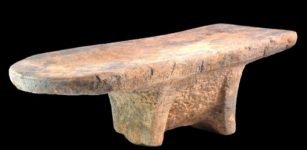 Evidence Of A 2,000-Year-Old Curry, The Oldest Ever Found In Southeast Asia
Featured Stories | Jul 25, 2023
Evidence Of A 2,000-Year-Old Curry, The Oldest Ever Found In Southeast Asia
Featured Stories | Jul 25, 2023 -
 Shakespeare ‘Borrowed’ Phrases From Little-Known Manuscript – Study Reveals
News | Mar 9, 2018
Shakespeare ‘Borrowed’ Phrases From Little-Known Manuscript – Study Reveals
News | Mar 9, 2018 -
 Meenakshi Temple Of Madurai Is Among Most Powerful Sacred Sites For Hindu People
Featured Stories | Apr 29, 2021
Meenakshi Temple Of Madurai Is Among Most Powerful Sacred Sites For Hindu People
Featured Stories | Apr 29, 2021 -
 Ancient Monuments The World Is Not Allowed To See – Forbidden Zone – Part 2
Ancient Mysteries | Aug 27, 2020
Ancient Monuments The World Is Not Allowed To See – Forbidden Zone – Part 2
Ancient Mysteries | Aug 27, 2020 -
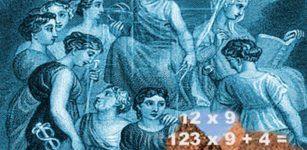 Number Nine: Sacred Symbol In Ancient Cultures
Ancient Symbols | Feb 14, 2017
Number Nine: Sacred Symbol In Ancient Cultures
Ancient Symbols | Feb 14, 2017 -
 Ogham: Unique Celtic Alphabet Used By Druids And Abandoned During Christian Era
Featured Stories | Jul 9, 2021
Ogham: Unique Celtic Alphabet Used By Druids And Abandoned During Christian Era
Featured Stories | Jul 9, 2021 -
 On This Day In History: ‘Edict Of Nantes’ About Freedom Of Religion Issued By Henry IV – On Apr 13, 1598
News | Apr 13, 2017
On This Day In History: ‘Edict Of Nantes’ About Freedom Of Religion Issued By Henry IV – On Apr 13, 1598
News | Apr 13, 2017 -
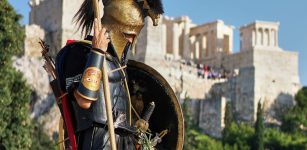 Evidence Foreigners Fought Alongside Ancient Greeks Is Challenging Millennia Of Military History
Featured Stories | Jun 1, 2022
Evidence Foreigners Fought Alongside Ancient Greeks Is Challenging Millennia Of Military History
Featured Stories | Jun 1, 2022 -
 Resourceful Pre-Hispanic Society In Bolivia Had Flourishing Agriculture Despite Harsh Environment Of The Andes
Archaeology | Dec 24, 2017
Resourceful Pre-Hispanic Society In Bolivia Had Flourishing Agriculture Despite Harsh Environment Of The Andes
Archaeology | Dec 24, 2017 -
 Tomb Of Christopher Columbus Finally Found But There Is One Problem With His Body
Archaeology | Apr 9, 2022
Tomb Of Christopher Columbus Finally Found But There Is One Problem With His Body
Archaeology | Apr 9, 2022 -
 4,000-Year-Old Tomb Altóir Na Gréine Rediscovered By Folklorist In County Kerry, Ireland
Archaeology | Jan 24, 2024
4,000-Year-Old Tomb Altóir Na Gréine Rediscovered By Folklorist In County Kerry, Ireland
Archaeology | Jan 24, 2024 -
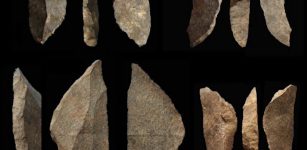 Prehistoric Swiss Army Knife Shows How Early humans Communicated
Archaeology | Jun 9, 2022
Prehistoric Swiss Army Knife Shows How Early humans Communicated
Archaeology | Jun 9, 2022 -
 Cajamarca, Peru: Three Archaeological Sites – Identified
Archaeology | Aug 24, 2015
Cajamarca, Peru: Three Archaeological Sites – Identified
Archaeology | Aug 24, 2015 -
 DNA From 3,800-Year-Old Individuals Sheds New Light On Bronze Age Families
Archaeology | Aug 29, 2023
DNA From 3,800-Year-Old Individuals Sheds New Light On Bronze Age Families
Archaeology | Aug 29, 2023 -
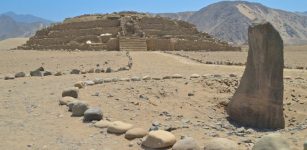 Astronomically Aligned Pyramidal Buildings Of America’s Oldest City Reveal How Its Builders Apprehended Space And Time
Archaeology | Apr 15, 2021
Astronomically Aligned Pyramidal Buildings Of America’s Oldest City Reveal How Its Builders Apprehended Space And Time
Archaeology | Apr 15, 2021 -
 Clan MacGregor: Fearless, Lawless And Persecuted Clan Of The Highlands
Featured Stories | Jul 9, 2018
Clan MacGregor: Fearless, Lawless And Persecuted Clan Of The Highlands
Featured Stories | Jul 9, 2018 -
 How Large Was The ‘Giant’ Dunkleosteus Terrelli – Prehistoric King Of The Oceans?
News | Apr 10, 2023
How Large Was The ‘Giant’ Dunkleosteus Terrelli – Prehistoric King Of The Oceans?
News | Apr 10, 2023 -
 Mystery Of The Lost Arctic Civilization- Two Ancient Mummies Found At The Zeleny Yar Necropolis
Archaeology | Jul 20, 2017
Mystery Of The Lost Arctic Civilization- Two Ancient Mummies Found At The Zeleny Yar Necropolis
Archaeology | Jul 20, 2017 -
 On This Day In History: Napoleon Exiled To Elba – On Apr 11, 1814
News | Apr 11, 2016
On This Day In History: Napoleon Exiled To Elba – On Apr 11, 1814
News | Apr 11, 2016



